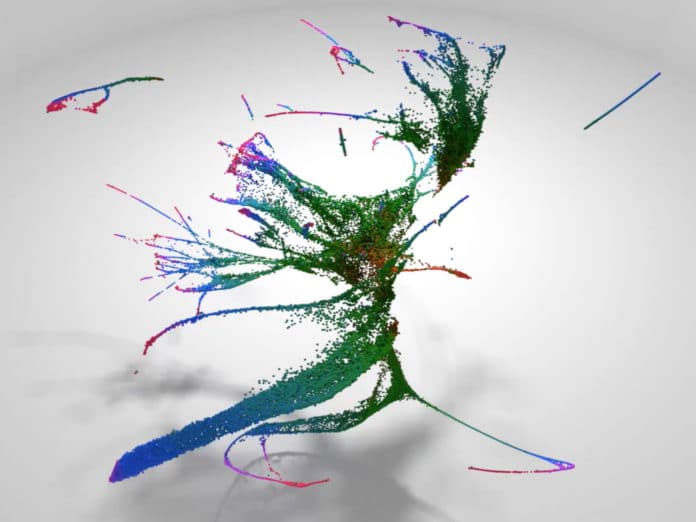Penn scientists in a new study, have created the first detailed map of the molecular level changes in cells during animal embryonic development.
C. elegans is an animal that hatches with just 558 cells in its body. In a multicellular organism, each cell is derived by cell division from a single fertilized egg, resulting in a “cell lineage tree” that demonstrates the division history of every cell, and portrays their relationships to one another, akin to a genealogy.
In this study, scientists characterize the molecular basis for their specification by profiling the transcriptomes of 86,024 single embryonic cells.
For this study, scientists used the latest technology in the emergent field of single cell biology to profile more than 80,000 cells in the embryo of the nematode Caenorhabditis elegans.
John I. Murray, who led the study said, “Over the past few years, new single cell genomics methods have revolutionized the study of animal development. Our study takes advantage of the fact that the C. elegans embryo has a very small number of cells produced by a known and completely reproducible pattern of cell divisions. Using single cell genomics methods, we were able to identify over 87 percent of embryonic cells from gastrulation (when there are about 50 cells present) through the end of embryogenesis.”
Scientists charaterized what happens at the molecular level by estimating the transcriptome— all the RNAs in a cell—of individual cells during development using a single cell genomics approach. These techniques enable researchers to figure out which genes are expressed, or turned on, in each of tens or a hundreds of thousands of cells and to distinguish uncommon cell types dependent on their expression of similar subsets of the genes.
Be that as it may, it is difficult to know in these examinations whether all cell types have been recognized, or how the identified cells are identified with one another through cell division.
The investigation reveals fundamental mechanisms by which cells acquire specialised functions during development. For example, the researchers showed that cells with very different lineage histories can rapidly converge to the same molecular state so much that that they can no longer be told apart. The researchers also found that, during differentiation, some cells undergo strikingly rapid changes in their transcriptomes.
The study is expected to have applications in regenerative medicine and cellular engineering, such as controlling the cell-differentiation process involved in using patient’s own cells for therapy.
The study is conducted in collaboration with scientists University of Washington (UW). Other co-authors of the study includes Junhyong Kim, Robert Waterston, Priya Sivaramakrishnan, Elicia Preston, Hannah Dueck, Derek Stefanik, Kai Tan, Chau Huynh and Cole Trapnell.
